Highs and Lows of Synth Collecting: Tops and Flops
Tales of joy and woe collecting synths from Korg, Oberheim, Yamaha, and Kawai.
When synth collecting, not every synth can fit you like a glove. These are the best and worst synthesizers to pass through my studio.
Synth Collecting Tops and Flops
I live in Japan. As I’ve written about before, vintage Japanese synths can be really affordable – especially so if you buy them broken and don’t mind fixing them.
In my more than 10 years in country, I’ve amassed a healthy collection of instruments. For most of that time, I kept on buying and buying. I would occasionally flip something but for the most part, I just wanted more. All of the synths I had ever desired were now largely within reach, so of course I kept on purchasing. But at some point, I realized that I wasn’t getting on with everything – and these were often instruments that I had had my eye on for years. Many were GAS but a few ended up as pass.
Here then are six instruments, three that I fell in love with and another three that I surprisingly didn’t. They’re my synth collecting tops and flops.
What are your synth collecting wins and losses? Let me know in the comments.
Synth Collecting: Oberheim Matrix-6
Ever since I saw music videos from Prince and Van Halen on MTV in the ‘80s I had wanted an Oberheim. But as a writer and teacher, I never had the kind of money that would let me buy an OB-Xa or Matrix-12. So when I saw a Matrix-6 show up on Yahoo Auctions (by far the cheapest place to buy synths in Japan) I jumped at the chance.
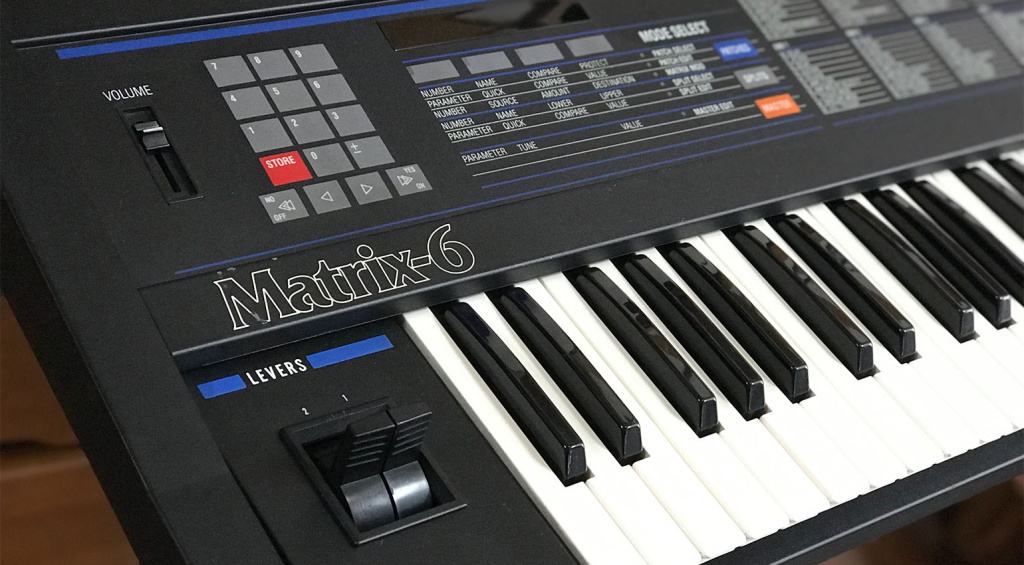
Usually, non-domestic synths are expensive here. However, the musical instrument market was so big in Japan in the 1980s because of the amazing economy that some overseas companies like Sequential and Oberheim started having synths manufactured locally. Hence the great price on a Matrix-6.
To be fair, the Matrix-6 was pretty affordable at the time (1986-1988) too. This is because rather than discrete circuitry, it used the Curtis CEM3396, the synthesizer on a chip. Don’t get me wrong, the Matrix-6 doesn’t sound bad, it just doesn’t sound like what I wanted an Obie to. It’s very clean and almost too pretty.
So I sold it.

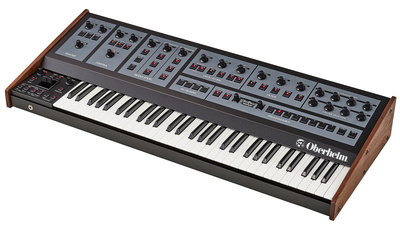

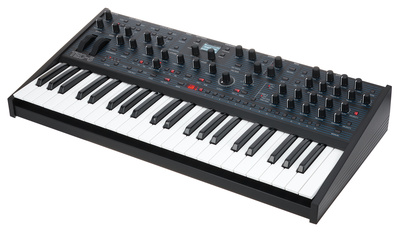
- Oberheim home page
Synth Collecting: Korg Poly-61
A synth that I didn’t expect to like so much is the Korg Poly-61. The 1982 successor to the Polysix (which I oddly didn’t take to) doesn’t seem like it should be so great. It has DCOs instead of VCOs, here’s no MIDI, and the resolution on the digital control over the filter and envelopes is pretty low resolution, meaning there’s audible stepping when you sweep the filter.
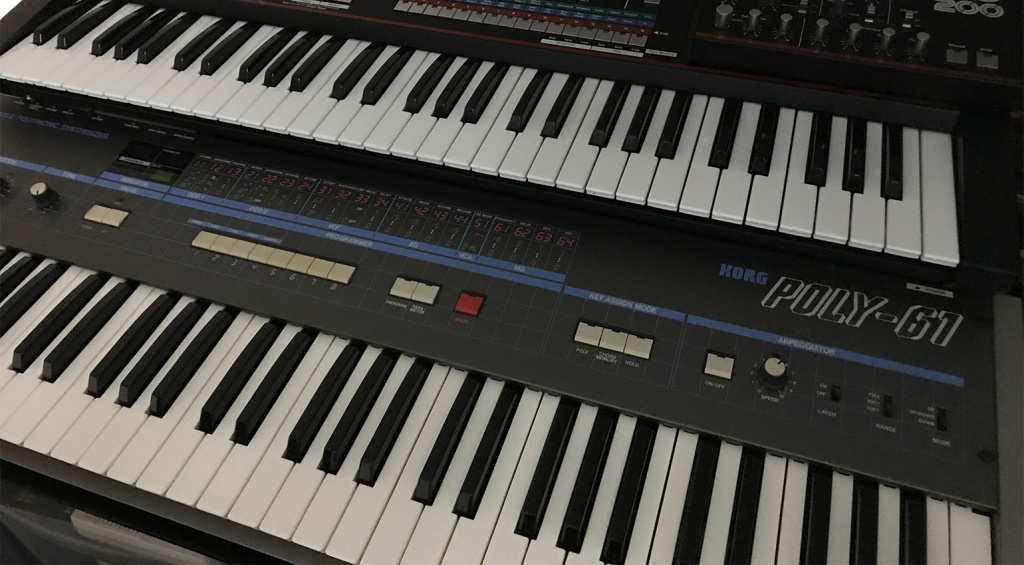
And yet! And yet this all becomes part of the synth’s charm. I love to use a drum machine trigger to clock the arpeggiator and just go to town on the filter, waggling the joystick to add additional modulation.
But really, I adore the Poly-61 for its pure sound. At the end of the day, that’s the thing that most attracts me to a synth: sonics. And for whatever reason, the 61 has what I like. It’s rich and full, with a surprising low end that makes it great for bass too.
- Korg home page

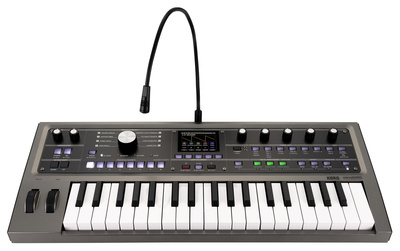

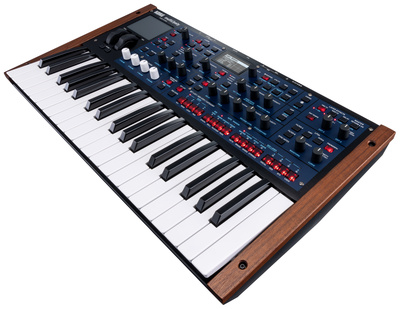
Synth Collecting: Yamaha DX7S
Growing up, I hated FM. Or what I knew of it. I hated the sound of 1980s pop records. I was much more into heavier stuff like Front 242. Yes, the joke’s on me as FM is all over EBM, especially for the bass. But now as an adult I can appreciate FM in all its varied glory, even E. Piano 1.
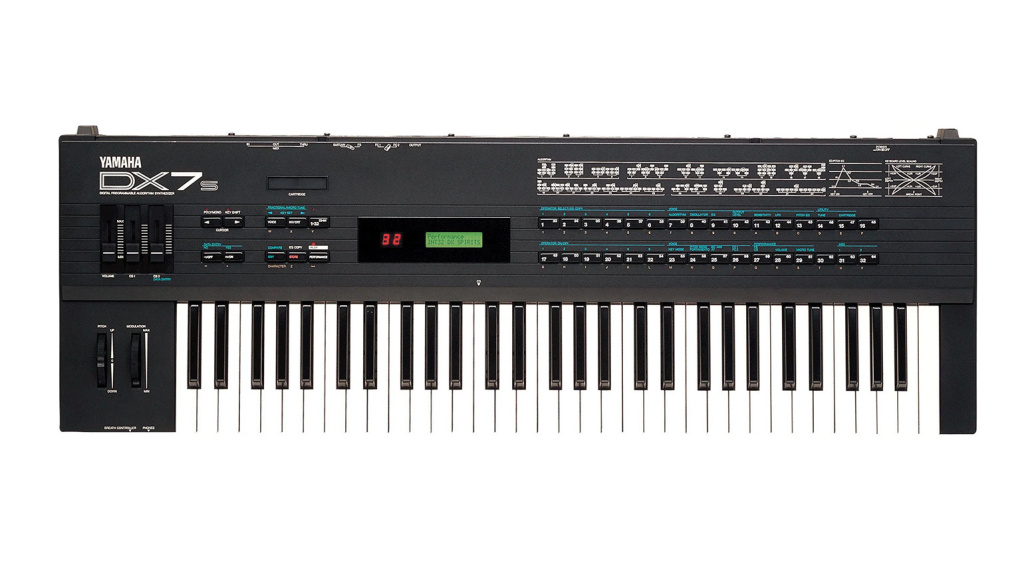
So imagine my surprise when I found a nearly mint Yamaha DX7S complete with music stand and ROM cart and then it just sat there in a corner of my studio. Thinking about it now, I made two mistakes: first of all, it’s not the original DX7 from 1983, it’s part of the 1987 upgrade series. And, although I love the look of it, it’s not the iconic original design. It just doesn’t have the same historical weight (and if you’ve noticed the amount of synth history pieces I write for Gearnews, you’ll have realized that history is important to me).
There’s also the sound. It’s a little too clean. I much prefer the sound of the 12-bit original to the later 16-bit ones. Even better is to downgrade from six operators to 4-op, as with the DX21 and FB-01 (two other FM favorites) and the TX81Z.

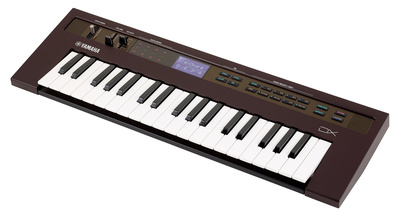
- Yamaha home page
Synth Collecting: Yamaha TX81Z
Which brings me to the next discovery I made while synth collecting: the Yamaha TX81Z. An eight-voice rackmount FM synth from 1987, it was something of a next-gen FM synth for Yamaha in that it offered more than just sine waves. For the first time, you could make sounds by combining complex waveforms. The result, to my ears, is grittier and – dare I say it – almost warm.
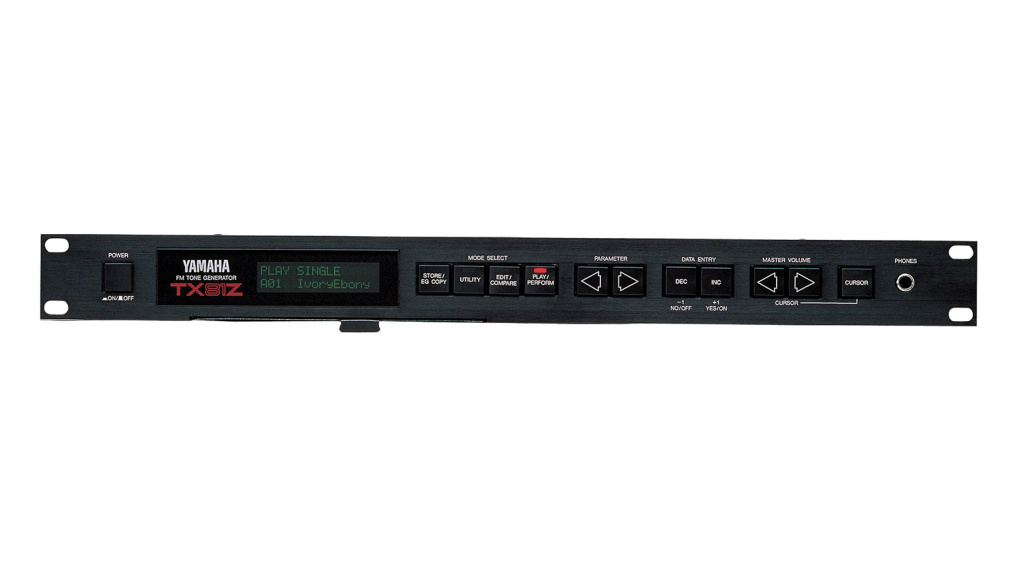
To be honest, I bought the TX81Z specifically for the Lately Bass preset (just like I bought the DX21 for Solid Bass – yes, I produce electronic music) but I have come to love the TX81Z especially for strings and pads. It’s very industrial, very rave, very… hardcore, but it can do nice sounds too.
I’ve often toyed with getting another one just so I can layer the Lately Bass. Say, I wonder what would happen if I stacked Lately and Solid? Hmm, be right back.

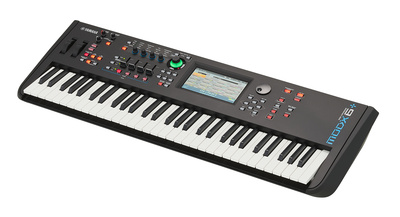
- Yamaha home page
Synth Collecting: Kawai K3
I’m a fan of underdog synths. Honestly, I’d rather own a synth that no one else wants than an instrument that everybody is scrambling to have. Maybe that makes me a contrarian. I also kind of feel bad for neglected synths. My wife and I rescue pet rats. I guess you could say I also rescue unloved synths.
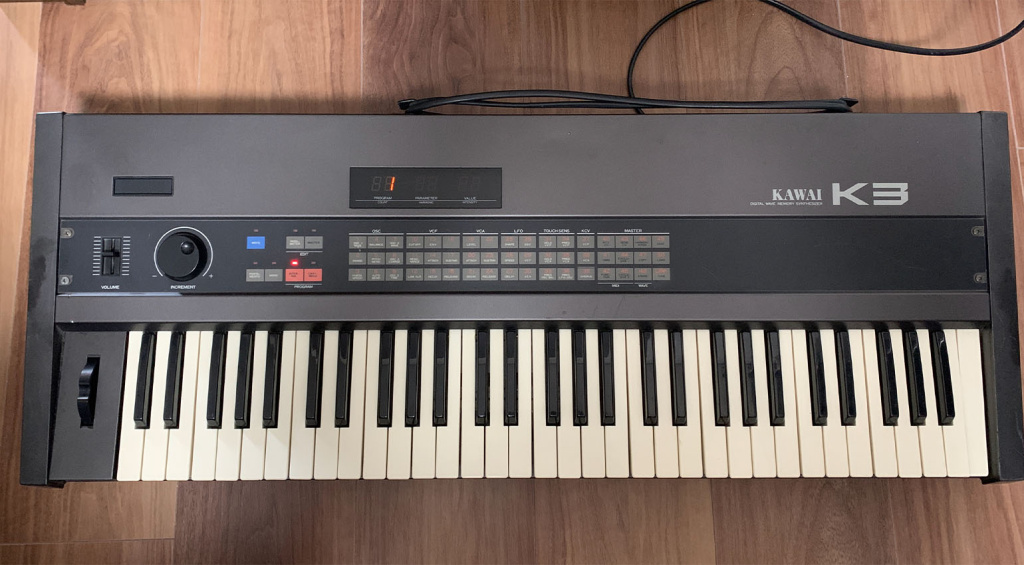
Is the Kawai K3 truly unloved? It’s certainly on the obscure side. The company’s first foray into digital synthesis (well, hybrid), the K3 features single-cycle sampled waveform oscillators and an analog filter. I absolutely adore the K1, the company’s gritty, filterless ROMpler. I figured that the K3 would be just as good – better even with the filter?
Sadly, it’s not. It’s certainly not bad, I just find the sound a little uninspiring. If you tweak it just right, it can remind you of the PPG Wave but without the ear-tickling aliasing. (The K1 is much better for low-resolution sounds.) The waveforms are also fairly pedestrian, aimed more at people who want the sounds of acoustic instruments than synthesizers.
Funny, after playing with it for awhile I realized that I actually had a K3m in the studio at one point 20 years before. I didn’t like it then either, which is probably why I forgot it.

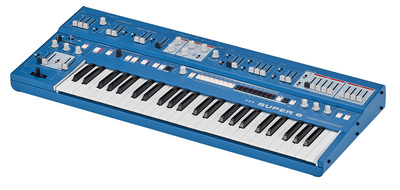
- Kawai home page
Synth Collecting: Korg DW-8000
No, the real mid-80s hybrid synth magic is to be found not in the Kawai K3 but the Korg DW-8000. I wrote extensively about it in a separate article so rather than repeat myself, I’ll let you read that at your leisure.
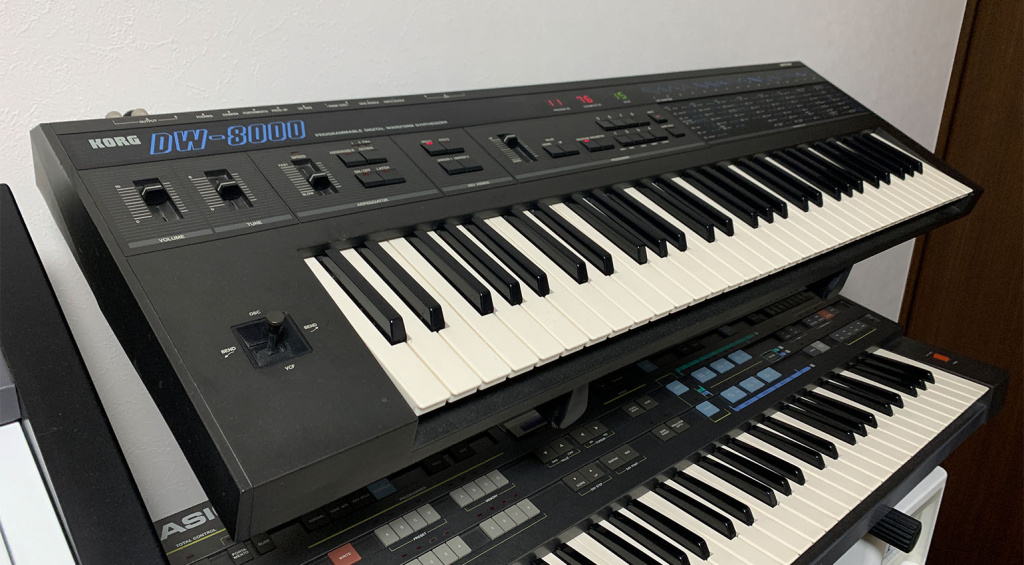
The DW-8000 is one of my biggest surprise purchases. I bought it not knowing much about it, only that it was hybrid when that wasn’t very popular. I didn’t know what to expect – and I still feel that way, because every time you turn it on it blows your mind in new ways. It can do almost wavetable-like classic synth sounds, glassy sample synthesis tones, and all manner of wild effects and unusual timbres. Nothing else sounds like it, and I love it for that.

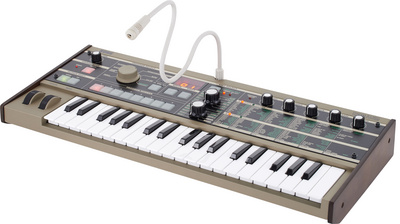

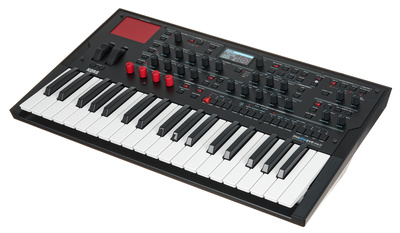
- Korg home page
More Information
- All about synthesizers
6 responses to “Highs and Lows of Synth Collecting: Tops and Flops”

You are currently viewing a placeholder content from Facebook. To access the actual content, click the button below. Please note that doing so will share data with third-party providers.
More InformationYou are currently viewing a placeholder content from Instagram. To access the actual content, click the button below. Please note that doing so will share data with third-party providers.
More InformationYou are currently viewing a placeholder content from X. To access the actual content, click the button below. Please note that doing so will share data with third-party providers.
More Information
 4,6 / 5,0 |
4,6 / 5,0 | 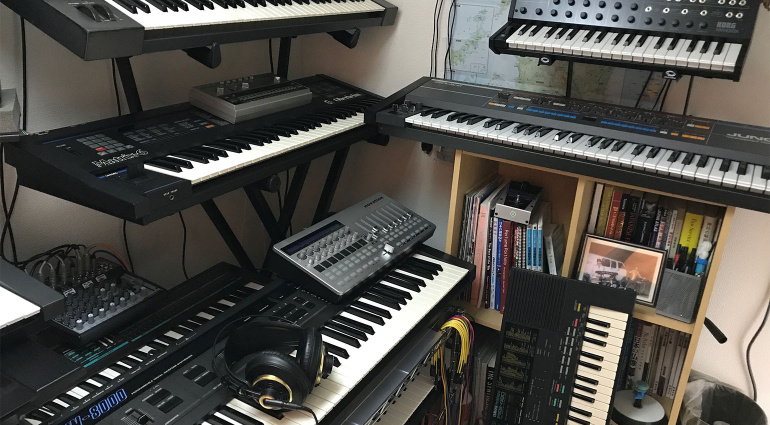


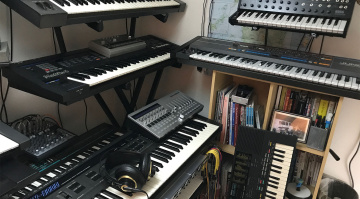


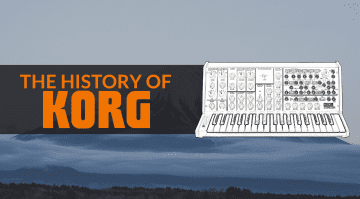
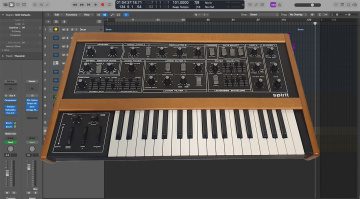
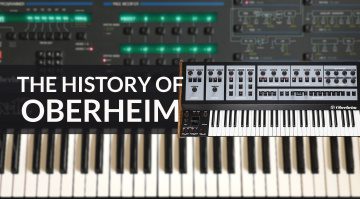
Some interesting choices here.
I’ve been fortunate enough to use &/or own many synths in the last 30 plus years, but the curio in my setup up has always been the relatively obscure Korg DS8 .
I bought this second hand as it had aftertouch, 61 keys and was 8 part multi timbral. it was also dirt cheap, which my late teens self really.appreciated.
But for years on end i tended to use it kore as a keyboard controller for other gear, such as the then new JV1080. I just couldn’t warm to the internal sound engine, which was (and is) an easier to use, but less initially impactful (due to most of the presets being a bit vanilla flavoured) variant of FM.
post 2000, I’d slip it into mixes and jobs, and used it live with effects pedals. It even fell out of the back of my car once, and was totally intact; a fact confirmed by the gig I had half an hour later.
last year it went for a full overhaul as the memory had dumped itself, which oddly also affected the sound engine. Clive Bonner (ex korg) gave it a full wash & brush up (psu, recap, new internap battery, keybed etc)and it’s singing like a hot canary.
I don’t know.why I kept it for so long. I did tried to sell it on years ago, but no dice. it’s effectively hung on in there, where synths like the OB8 (full midi, page 2), 100m (3 cabs & 184 keyboard), polyevlover, tetra, mopho, juno 60, 106, DW8000, DW6000 and the JX3p couldn’t & didn’t.
Thought sure there would be a mention of Ensoniq synths. Always underrated by big players and big companies. I’ve had my SQ80 since 1987. Still sounds and looks like it came right out of the box. And those sounds can be big analog to sparkling digital. And then there’s the best sequencer in any keyboard.
I like your list, I would also add the Casio CZ-1. I picked up broken one at a swap meet for fifty bucks and did a complete recap on it in 2005. Added a few aftermarket add ons and still is my favorite keybed. I also like my Yamaha TX-81Z, however my Access Virus TI gets more use these days.
Sounds like you’ve barely even started on the journey. You’ve got a long way to go. Best of luck.
This is definitely not an exhaustive list.
Interesting take.
I own all of these synths, and have brought every synth on your list back from the dead but the Yamaha TX81Z.
The K3 is misunderstood and slept on, and is certainly a better synth than the dw8000 and poly 61, as well as the Yamaha 4 op engine that inhabits several of Yamahas synths from that period. And I would rather have it than a DX7 almost any day of the week, unless it is a MK1 a comes with SuperMAX installed, as it provides morphing capabilities between patches, where you can use the mod wheel to morph between settings, which can lead to some crazy sound design sessions.
People expect the K3 to be something it isn’t, and for it to sound like a PPG, and for it to be used for brash or glassy sounds with lots of harmonics… it sounds pedestrian going that direction. I too would hate the synth if I listened to the presets, made sounds with that expectation and listened to others opinions without thoroughly exploring this synth.
It is pretty easy to edit, considering it has such little control. I think it is the least expensive synth that has the classic SSM 2044 which is the same filter used in the Korg Mono/Poly and the Korg Trident.
The SSM filters are really nice and helps make this machine a incredible tool for Lofi soundscapes and can sound wonderfully dreamy in ways that are reminiscent of the DW8000 and Poly61 but it can also produce timbres that neither could dream to replicate.
Being able to use aftertouch to change the levels balance between osc 1 and 2 is an awesome feature when used to create gradual timbre shifts in drones and pads. It also includes a user definable additive waveform which further increases how far you can push the timbral variation. Some of the slower and more subtle chorus settings can be used to increase the richness of the sound without sounding like cheesy 80’s chorus.
I have some very nice synths and the Kawai K3m is something that can confidently sit in a mix with a synth 10 times the price. It doesn’t need to be anymore than what it already is, just like the Ensoniq ESQ1.
Personally, if I had to choose, I would choose the ESQ1 over all the synths listed, as it has character for days and is very flexible.
It is something everyone should give a try… Ensoniq synths are king of budget gear.